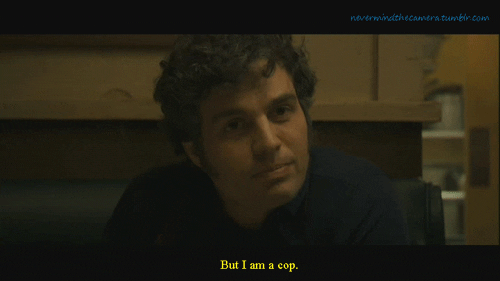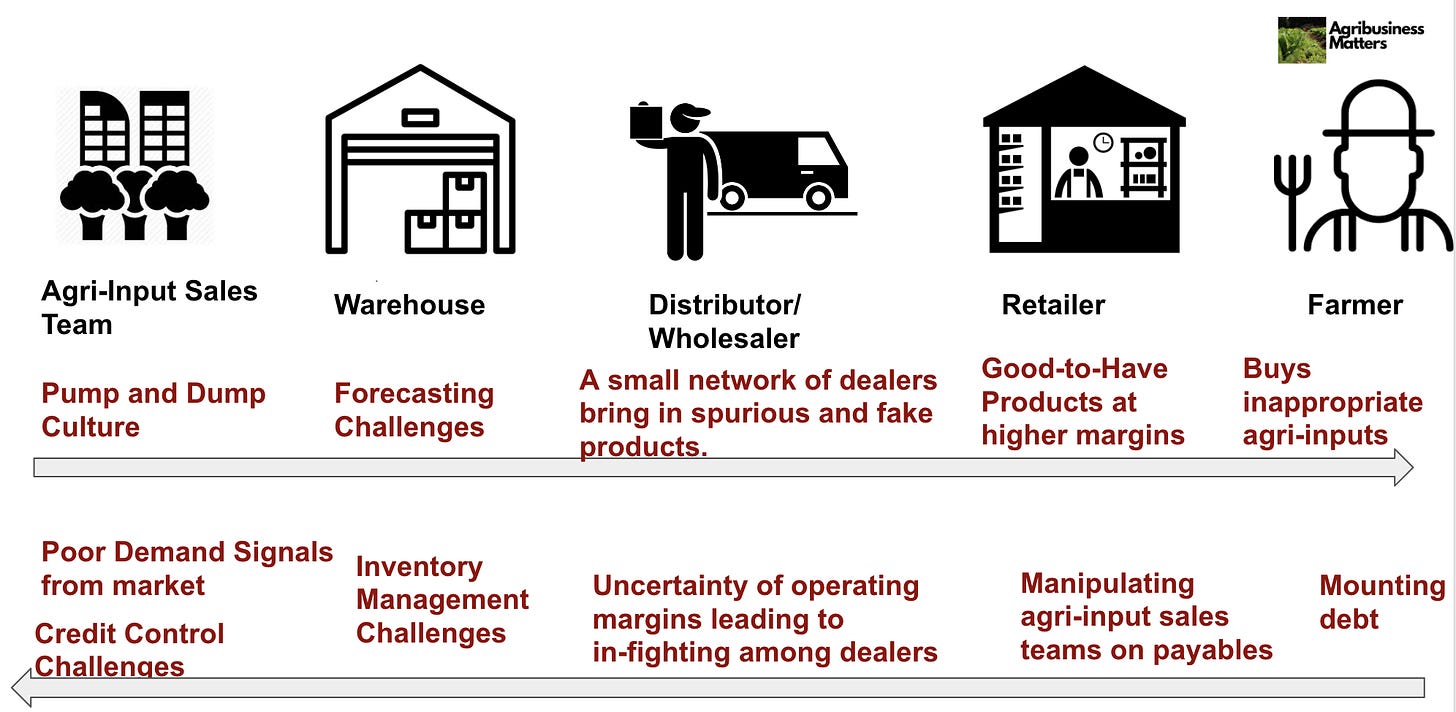Netafim India's Beer Game Problems
What happens when economics eats advanced technologies for lunch?
Few months ago, The Morning Context wrote a fascinating story on Netafim India (paywalled). The story is a cautious reminder of what happens when market forces enter the domain of Indian agriculture, which, ironically, has many ground conditions for markets to fail.
Before you dismiss me as an anti-capitalist, born in India during the 1980s, I have personally benefited from the power of markets to be the proverbial tide which lifted many Indo-Anglian boats (shorthand for Middle-class, English-speaking, highly educated segment in India).
However, if history is any indicator, markets have mostly failed under the following operating conditions: 1) Does it require shared resources? 2) Is there information asymmetry ? 3) Does it involve transactions in which the pay-off happens in the future?
And so, the bar I have set for markets to do what it is supposed to do is higher:
What does it take to build a sound business model which can both raise the tide of sustainable progress and lift the vulnerable boats of Indian farmers in search of progress which has eluded them so far?
If you are okay with me getting a little personal with you, it is this question which pretty much animates my purpose in writing Agribusiness Matters newsletter.
In the Mahabharata-based Leadership coaching work that I occasionally do with few clients, one of my favourite questions is this: In doing what I am doing, what am I really doing?
If you study the epic of Mahabharata deeply, during the period of exile (agyatavas), each of the Pandava prince does tapas to find an earnest answer to this question. And it is this question which helps them discover their heroic potential once again.
In doing what I am doing in the Agtech space, helping agritech founders build better platforms to solve challenging problems in agriculture, what I am really doing is this.I am earnestly trying to find out the most convincing answer to this question that I stated above.
If you read between the lines, you would have noticed that I didn’t use the word “technology” once. All the necessary technologies to make agriculture prosperous and sustainable is already available with us. We need to figure out the right economic logic upon which the business model can be yoked to leverage technology and create a win-win proposition.
This Netafim India story serves as a wonderful case-study to observe what happens when advanced digital agriculture technologies get embroiled inside status quoist economic ground realities which are skewed against the farmers by design, leading them to bear the brunt of vicious one-sided contracts and debt traps.
Let’s dive in.
Here is a short and not-so-sweet timeline view of the story.
Act 1: Netafim India Sales Representatives and dealers convince farmers to order equipments that they didn’t originally ask for. Their persuasive strategy was simple but powerful: Order the equipment from us and apply for a loan. We will give you a loan not only for the equipment but also for other farm development work. The lender here is Netafim Agricultural Financing Agency (NAFA)
Act 2: NAFA was implementing the National Horticulture Board’s Shade Net construction project scheme and providing loans for the farmers to avail maximum upto 50% subsidy for the micro-irrigation equipments needed for this project.
Act 3: This proposition, naturally, is very tempting for farmers deprived of cash-flow. If they buy the micro-irrigation equipment worth X on credit, they are essentially getting a loan for 2X. Farmers are further promised by the sales reps that they will receive agronomy support for one year; they don’t have to pay margin money and the interest will be charged only when their projects become viable.
Act 4: Life happens. (Read as promises meant to be broken)
Act 5: Margin Money is deducted from the loan disbursed on the day the equipment is sent to farmers. Neither the promise of installation of Netafim’s Crop Management Technologies (automated systems for precision irrigation) nor the one-year agronomy support is fulfilled.
Although to be fair to Netafim, their executives allege in counter-response that the contracts spelt out the terms clearly and were written in the local language. But what do we do really? Farmers and many people from the Indian subcontinent are wired by their culture to trust the word that has been verbally communicated more than the word written in a piece of document.
Act 6: Crop Management Dealers of Netafim allege that Netafim India forced them to place the orders first, even though the scheme states that the loan amount was to be disbursed first to the farmers. They also claim to have received the equipment even before the loan to the farmer was sanctioned. They further allege that the loans were debited from their dealership’s account to farmers even when the companies started financing farmers directly.
Act 7: The dealers now find themselves caught between farmers and Netafim India, stuck in their own debt traps, with excess company dumped inventory lying in the godown, for which they are continuing to pay rent.
Act 8: Facing mounting debt, farmer and dealers take Netafim India to Court for breach of promise. Netafim India files summary suits in Thane district court against 200 dealers who owe the company on an average 60 lakh INR (~80KUSD), as per the lawyer representing the dealers in the case.
Act 9: Bombay High Court ruled its judgement in favour of farmers last year.
From the High court ruling:
In the present matter, it is not disputed that even when irrigation system was not supplied and project was not physically started, the demand of repayment of loan was made by the applicants. This was nothing but exploitation and deceit.
Final Act: Favourable ruling doesn’t often provide relief from debt traps or change the underlying ground realities. Do they?
Ever since I read this story and filed it for future reference, I kept returning to it, struck by its morbid ring of familiarity.
Although I have no interest in policing, It’s pretty close to that feeling they show in classic serial-killer movies like Zodiac when cops start groping for patterns from the murders that have happened in the past.

If you read my earlier deep-dive into the bull-whip effect happening in the traditional agri-input supply chain, I had spoken about excess inventory being dumped and farmers facing the final brunt.
From the blog:
The Beer Game has been playing out sadly for several decades in the agri-input retail, making farmers buy agri-inputs that are either unnecessary or appropriate, causing them further undue economic stress.

It’s strange to observe how these stories repeat, whether for selling automated precision irrigation system or good old pesticides to farmers, with similar characteristics:
Call these the beer game problems of Indian Agtech, if you will. Let me run through a quick checklist to see if this story deserves to be under Beer Game Problems category.
1) Does this story show chronic Pump and Dump Culture?
Check.
From the Morning Context Story:
On the ground, December is no season for farmers to buy any of this equipment. The buying season generally starts about March or April. But Netafim follows a January-December financial year, so December was the last month for the company’s representatives to complete their targets and show a bump in sales, dealers claim. . At the same time, the dealers would end up paying interest on the cost of the equipment till the time a farmer buys them.
2) Does this story involve Channel relying on schemes to sell products with no skin in the game?
Check.
3) Does this story involve Farmers ending up buying products on credit without understanding the actual cost they are paying for?
Check.
c) Does this story involve Channel ending up with dumped inventory.
Check.
In the last three years that I have spent traveling and visiting fields and markets in agri-input supply chain, I have seen enough and more instances of beer game problems. And they persist, no matter whether you buy pesticides or advanced farming technology equipments.
What does it take for Agtech to address the root cause of the beer game problems ? I will continue my exploration.
Thank you for reading. Do share your perspectives. I am all ears.


Seen many times how these schemes run... Sowing over...seed distributed, X crop Y input. The real issue is what is the solution? what we can do or contribute? who'll bell the cat?
classic example of govt. schemes